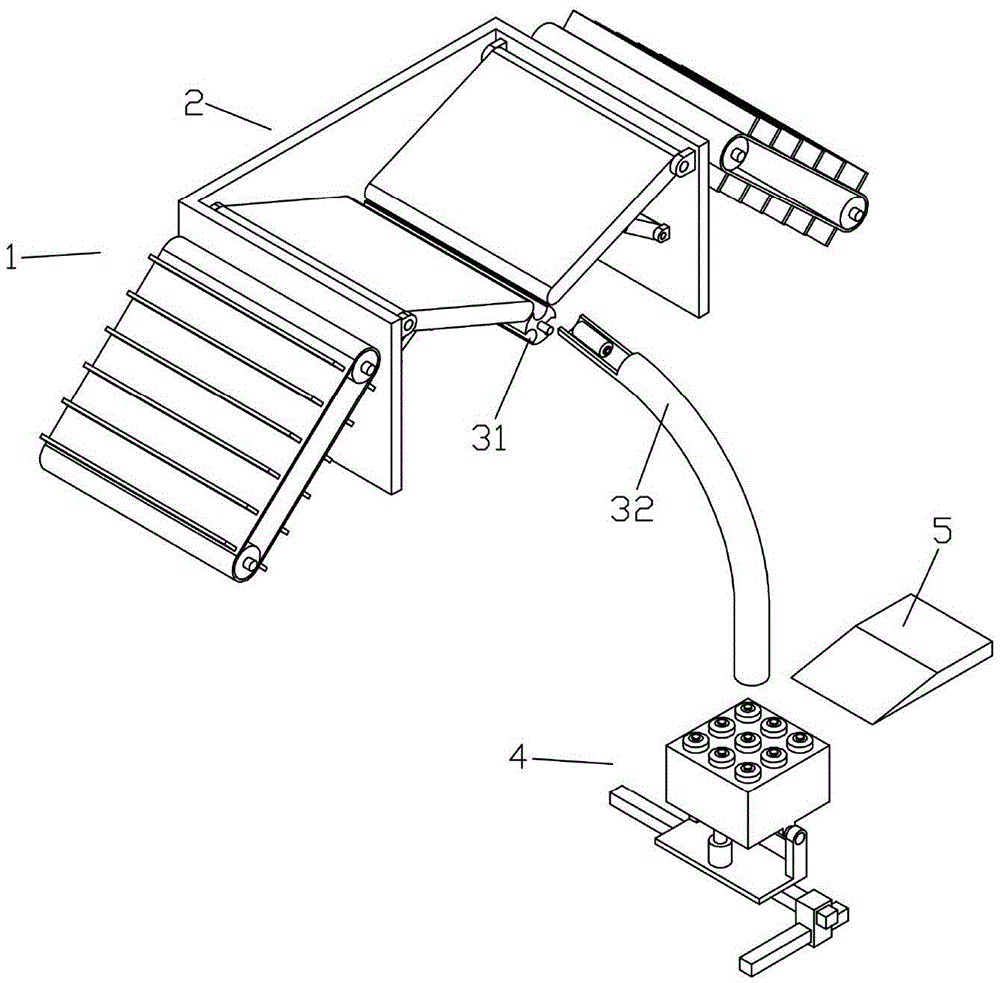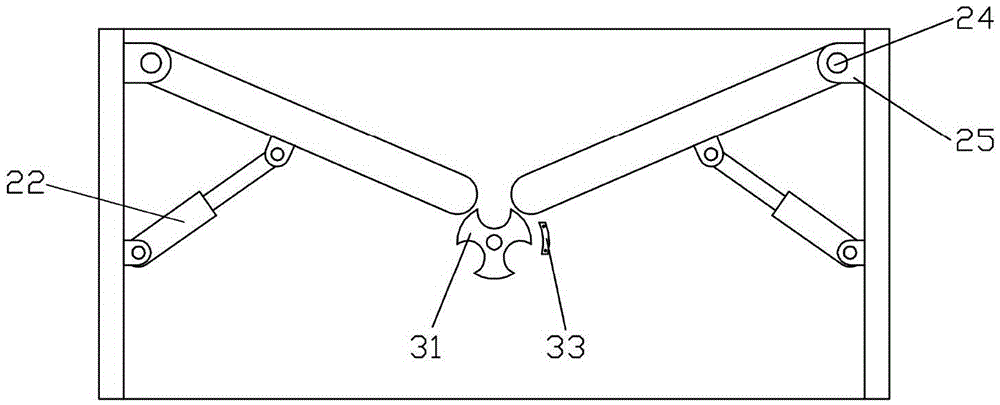Automatic disassembly apparatus of waste batteries
A technology for waste batteries and batteries, applied in battery recycling, solid waste removal, waste collector recycling, etc., can solve problems such as low efficiency, damage to dismantling operators, and pollutant leakage, and achieve the effect of improving dismantling efficiency.
- Summary
- Abstract
- Description
- Claims
- Application Information
AI Technical Summary
Problems solved by technology
Method used
Image
Examples
Embodiment Construction
[0018] In order to make the above objects, features and advantages of the present invention more comprehensible, specific implementations of the present invention will be described in detail below in conjunction with the accompanying drawings.
[0019] Such as figure 1 As shown, the automatic dismantling device for waste batteries includes a battery feeding and conveying device 1, a battery buffer trough 2, a rotating feeding unit, a dismantling and fixing part 4, and a cutter unit 5. There are two battery feeding and conveying devices 1, They are respectively located on both sides of the battery buffer tank 2. The battery buffer tank 2 has a slot, and the rotary feeding unit is located directly below the slot. The rotary feeding unit can send the batteries falling from the slot into the dismantling and fixing part 4 , the cutter unit 5 is located on the side of the dismantling and fixing part 4 , and the cutter unit 5 can cut off the upper casing of the battery.
[0020] Suc...
PUM
 Login to View More
Login to View More Abstract
Description
Claims
Application Information
 Login to View More
Login to View More - R&D
- Intellectual Property
- Life Sciences
- Materials
- Tech Scout
- Unparalleled Data Quality
- Higher Quality Content
- 60% Fewer Hallucinations
Browse by: Latest US Patents, China's latest patents, Technical Efficacy Thesaurus, Application Domain, Technology Topic, Popular Technical Reports.
© 2025 PatSnap. All rights reserved.Legal|Privacy policy|Modern Slavery Act Transparency Statement|Sitemap|About US| Contact US: help@patsnap.com



